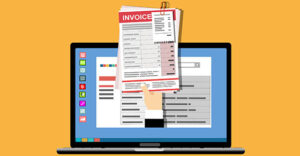For a couple decades or so now, companies have been urged to “get on the cloud” to avail themselves of copious data storage and a wide array of software. But some businesses are learning the hard way that the seemingly sweet deals offered by cloud services providers can turn sour as hoped-for cost savings fail to materialize and dollars left on the table evaporate into thin air.
Unclaimed discounts
One source of the trouble was revealed in a report entitled 2024 Effective Savings Rate Benchmarks and Insights, released earlier this year by cloud solution provider ProsperOps.
After analyzing $1.5 billion worth of Amazon Web Services (AWS) bills submitted to hundreds of organizations over a 12-month period, the report writers found that more than half of those organizations neglected to claim discounts baked into their cloud computing deals. As a result, the organizations paid full on-demand rates for “compute” services, such as data processing and computer memory, resulting in unnecessarily high costs.
The predicament reveals a key risk of cloud computing arrangements — particularly with major providers such as AWS, Microsoft Azure and Google Cloud: They’re complicated. Among the chief advantages of the cloud is that it’s scalable; companies can expand or diminish their computing services as their needs dictate. But with scalability, and other cloud functions, comes intense billing complexity that makes it difficult to control costs.
Best practices
So, what can your business do to ensure high cloud costs don’t rain on your parade? Here are a few best practices:
Know what you’re getting into. Just as you would for any other business contract, be sure you, your leadership team and your professional advisors thoroughly review and approve the terms of a cloud services agreement. Generally, the more predictable the pricing, the better.
Get familiar with your bill. Cloud computing invoices can be just as complex as the contracts, if not more so. Dedicate the time and resources to training yourself and other pertinent staff members to be able to read and understand your bill. If something seems inaccurate or difficult to understand, contact your provider for clarification.
Identify discounts … and claim them! If there’s one clear lesson from the aforementioned report, it’s that discounts matter and you should do everything in your power not to leave them on the table. Customers often have three types of savings “levers” to choose from: commitment-based discounts, volume-based discounts and enterprise discount programs.
Learn as much as you can about those offered by your provider. Then use carefully identified metrics to determine eligibility for discounts and claim them when you qualify. Many cloud computing platforms have built-in dashboards that enable you to visualize various metrics. Or you may be able to access a third-party dashboard via a web browser.
Review overall usage. At least once a year, take a broad look at precisely how you’re using the cloud. You may be able to scale down and save money. Also look for unused resources. If you’re paying for a service or certain type of software that you’re not using, ask your provider to discontinue it.
Find the savings
For many types of businesses, cloud computing has become a mission-critical resource. Whether this describes your company or you’re just using the cloud for efficiency and convenience, it likely represents a significant expense that you should manage carefully. Our firm can help you assess the costs — and identify the potential savings — of your current cloud computing arrangement or a prospective one.
© 2024





